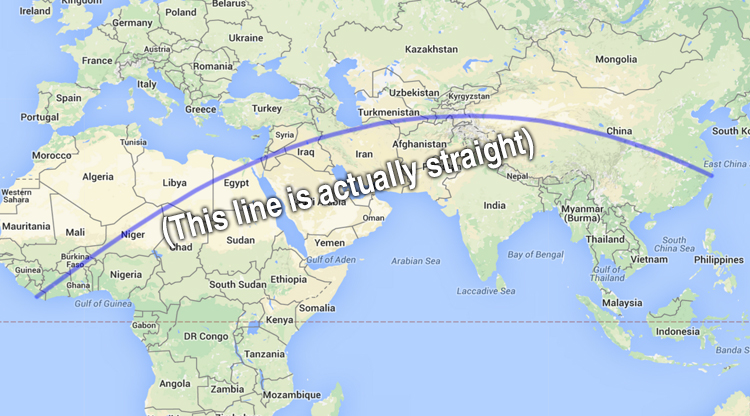Despite recent moves against ivory smuggling and its involvement in the Cobra II anti-poaching scheme, China remains one of the main consumers of ivory and other illegal animal products.
We caught up with Traffic's Dr Richard Thomas to discuss his organisation's fight against poaching and the demand for illegal animal products in China.
THAT'S: First things first, what is Traffic?
Richard Thomas: Traffic is a non-governmental organisation, and a specialist in wildlife trade issues. Our aim is to encourage any trade in wildlife species to be carried out sustainably and legally so that it does not pose a threat to the conservation of the species concerned.
The illegal sale of animal parts is a multi-billion dollar business, it attracts large criminal syndicates, militias and corruption. How can you, a non-profit organization, combat this?
We can’t tackle this alone—however, our role has been to raise awareness of the scale of the devastating illegal wildlife trade at the highest political level. As such, together with our partner WWF, Traffic undertook an Illegal Wildlife Trade Campaign in 2012 that resulted in many high level political statements and other actions acknowledging the seriousness of illegal wildlife trade and the actions needed to address it.
What is the current situation with regard to ivory smuggling? Did things improve in 2013?
It’s too early to say whether the situation has improved or got worse in 2013—there is always a delay in the reporting of ivory seizures. However, we do know it has certainly remained at an unacceptably high level. Traffic, as you may know, manages the Elephant Trade Information System (ETIS), a database of all the officially reported ivory seizures worldwide that have taken place since 1989, on behalf of Parties to CITES (the Convention on International Trade in Endangered Species of Wild Fauna and Flora). Analysis of this, in due course, will tell us where 2013 sits as regards the illicit ivory trade.
What do you think is the main reason behind high demand for ivory in China and Thailand?
In both countries, there is an element of the greater prosperity of the nation’s citizens putting what was once a luxury item into the affordability category. However, there is a perceived difference in buyers between the two countries, with China’s mainly purchasing for the domestically, but in Thailand, many buyers are from abroad – buying souvenirs.
According to a WildAid survey, most Chinese respondents believed that ivory came from elephants that had died naturally. Would a major awareness campaign help reduce demand for ivory?
Certainly awareness that the vast majority of illegal ivory in the marketplace is derived from animals that have been killed to obtain it might help convince purchasers not to buy. However, key to changing consumer behaviour is understanding what really motivates consumers to buy in the first place – possibly knowing it is from elephants that have been killed for their ivory isn’t the factor that will persuade people to change their minds. This is why Traffic has been commissioning market research of consumers of illegal wildlife products – to really understand what messages we need to push to persuade them to change their activities.
Do you think global cooperation is necessary to combat illegal trade in animal parts and wildlife poaching?
Undoubtedly global co-operation is essential: this issue is so big that it cannot be tackled by one country alone – even one the size of China! The co-operation between China and Kenya in this case was a very encouraging development indeed: we need to see more such international co-operation, not just between source and destination countries, but at all points along the smuggling trade chain.
Will the crushing of six tons of ivory in Dongguan this year have the desired effect?
The jury is still out on what will be the impact of these high profile ivory destruction events. Some argue it may restrict supply, drive up prices and lead to increased poaching. We simply don’t know at this stage, and will be closely monitoring the ivory trade to see what impact, if any, there is. That said, undoubtedly the crushing by China of 6 tonnes was hugely symbolic; it certainly sent a strong message to consumers there that the authorities are getting tough on the illegal ivory trade.
Some countries have started using GPS trackers and drones to protect their wildlife. Has this approach been successful so far?
There has been some success in using modern technology to improve enforcement measures, and indeed WWF US has been involved in trials using drones in Namibia in the protection of rhinos there. This is set against a backdrop of increasing sophistication by the poaching gangs in some instances, especially regarding rhino poaching in South Africa. Obviously there is a need for enforcement agencies to keep ahead of the poachers in terms of equipment and resources at their disposal or this will rapidly become a very uneven struggle, with the rangers, many of whom put their lives on the line already, the losers.

A few years ago, you said the Vietnamese black market is largely responsible for the rapid increase in the poaching of African rhinos. Is this still the case? Has the Vietnamese government taken action?
Vietnam still remains the pre-eminent destination for rhino horn. However, Vietnam is also a signatory to CITES (the Convention on International Trade in Endangered Species of Wild Fauna and Flora), and thus has an international obligation to implement the provisions of the Convention. As part of that process, the Vietnamese authorities are implementing a demand reduction strategy, to encourage citizens not to use rhino horn. Other commitments under CITES include ensuring no commercial trade in rhino horn is permitted, including of trophy horns. Although there have been a small number of seizures of rhino horn reported by Vietnamese authorities, given the well-documented rising numbers of rhinos poached in South Africa in recent years, the number of horns actually seized in the country must represent a tiny fraction of those actually entering it. This suggests considerable improvement in law enforcement and detection are needed.
Mozambique’s rhino population has already gone extinct, is there a risk that rhinos in other countries will follow suit?
True, there are no more rhinos to be found in Mozambique, but it’s an open border with South Africa; any rhino that strays over the border will be targeted by poachers. If the poaching pressure can be stopped, I think animals will fairly quickly recolonize Mozambique. It may surprise you, but currently, for White Rhinos, there are still more animals being born than being poached. However, we are very close indeed to the tipping point, when deaths will exceed births, and at that point, rhino populations could go into rapid decline, depending on what happens to the level of poaching.
What about elephants?
While there are still many elephants in parts of southern Africa, we are at the stage where, if poaching levels are not addressed, we will begin to see local and even regional extinctions; elephants are few and far between in West Africa for example, and the situation recently reported in Tanzania was particularly worrying, with some two-thirds of the elephants in one area apparently lost to poaching.
Besides elephants and rhinos, what other species are in direct danger of going extinct due to poaching?
There’s quite a few protected animals at risk of over-exploitation, here’s a few examples covering a range of taxonomic groups:
- Tigers - parts equivalent to 1425 Tigers seized between 2000 and 2012.
- Elephants - an estimated 25,000 elephants were poached in Africa in 2011.
- Rhinos - 1004 rhinos poached in South Africa in 2013.
- Pangolins - at least 218,100 pangolins seized between 2000 and 2012.
- Beluga Sturgeon - wild populations are overfished and poached and catches have dropped 90% in the past 60 years.
- Plants - some plants no longer exist in the wild because they have all been illegally collected. Examples include several species of Cycads and orchids (e.g. Paphiopedilum vietnamense).
- Ploughshare tortoise - considered among the rarest species in the world, the estimated world population is as few as 400 individuals, yet 45 individuals were recovered in a single seizure in Thailand last year.
- Yangtze Giant Softshell Turtle - many wild turtles are exploited for meat, but this is one of the rarest; only 4 individuals are known to survive.
- Bali Starling - at one stage the wild population fell to just 6 birds; the species is heavily trapped in its native Bali for the cagebird trade
- Chinese Giant Salamander - massively over-exploited for food, from being reasonably common 30 years ago, today it is very rare indeed.
How have countries with large tiger populations stuck to their protection commitments?
There’s great variation as to what level of information is compiled and reported on Tigers. A recent Traffic study found that only India had kept sufficiently detailed seizure records to allow meaningful analysis to identify the ‘hotspots’ where Tiger trade was taking place for example. More consistent record keeping could greatly improve law enforcement efforts.
How would you like to see wildlife criminals punished?
I’d certainly like to see wildlife crime treated as the serious crime it undoubtedly is – and that would mean tougher penalties in many cases.




















0 User Comments